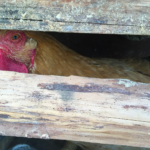The science fiction effect
By Laura H. Kahn | February 6, 2012
It’s alive! Neurophysiology. Huddled around a warm fireplace one cold summer’s night in 1816, a small group of friends decided to hold a competition to see who could write the scariest horror story. While vacationing in a villa by Lake Geneva, Switzerland, the friends spent their time reading ghost stories and discussing the exciting experiment being performed by the scientists of the day: reanimating dead matter.
Luigi Galvani, an Italian physician, discovered electric currents in nerves when his assistant, who was standing next to an electrical machine, touched his scalpel to a frog’s dissected leg causing it to twitch. Galvani called it “animal electricity.” This chance discovery prompted other physician-scientists to use electrostatic machines to zap dissected frog muscles and, well, make them twitch. The mysterious process was called galvanism; today, it’s called neuro- or electro-physiology.
While the group of friends at Lake Geneva imagined the ghoulish possibilities of galvanism, one young woman was so horrified by the idea of reanimating corpses that she subsequently had a dream in which she saw “the pale student of unhallowed arts kneeling beside the thing he had put together.” This dream inspired her to write a horror story in which a “mad scientist” creates a monster out of dead body parts, a monster that wreaks havoc and kills innocents. The author is Mary Shelley. The story, of course, is Frankenstein. Considered by many to be the first true work of science fiction, it was certainly the world’s first cautionary tale about the perils of science messing around with life.
Half man, half beast! Vivisection. Eighty years after Shelley’s Frankenstein, H.G. Wells, one of the fathers of science fiction, wrote The Island of Doctor Moreau — a story of a “mad scientist” trying to convert animals into humans through vivisection, purely out of scientific curiosity. He disregards the pain he inflicts upon the animals as insignificant even though the animals scream while being cut. The doctor is eventually killed by one of his creations. Meanwhile, the narrator of the story, Edward Prendick, escapes the island but no longer feels comfortable around his fellow humans. They remind him too much of the beasts on the island.
Unlike neurophysiology, animal vivisection dates back to ancient times. Curious ancient Greek physician-scientists performed vivisections to see what was inside of animals. Galen, the Roman physician, was the first scientist to actually conduct experiments on animals; his scientific conclusions were ultimately wrong, but his experiments nevertheless influenced the practice of medicine for almost 1,500 years. And opposition to animal experimentation — which was done without any anesthetics or sedation — was nonexistent for almost all of those years.
Anti-vivisection sentiment is a modern phenomenon that developed in the early to mid-19th century, when keeping animals as pets became increasingly popular. After a lobbying campaign by the newly formed “Society for the Protection of Animals Liable to Vivisection,” the British Parliament passed the Cruelty to Animals Act of 1876, which required the use of anesthetics on animals used in experiments. (It helped that the usefulness of ether as a surgical anesthetic was recognized in the 1840s.)
Wells wrote The Island of Doctor Moreau at a time when animal-welfare concerns were emerging, but it wasn’t until the mid- to late 20th century that the morals and ethics of animal research were rigorously questioned — beginning with seminal works like Peter Singer’s 1975 book Animal Liberation and Bernard E. Rollins‘s 1981 book Animal Rights and Human Morality. Among other things, these books argue that animals should be accorded a higher moral status in our society and that scientists should not experiment on them simply because the knowledge gained will benefit human health. Their arguments struck a chord with many people.
And so, instead of science affecting culture (neurophysiology becomes the timeless Frankenstein), the culture (the potency of books about animals) affected the science: The scientific community has taken animal welfare to heart and has worked to minimize the number of animals involved in research as well as the animals’ levels of suffering. Both the United States and the United Kingdom have passed laws limiting animal experimentation. And, last year, for the first time, the United States suspended all new grants that use chimpanzees in research experiments.
Mother Nature — new and improved! Genetic engineering. In Michael Crichton’s best-selling novel Jurassic Park, genetically engineered animals are big business. At the International Genetic Technologies (InGen) Corporation’s research facilities, scientists extract dinosaur DNA from mosquitoes preserved in amber. Using reptile or amphibian DNA to fill in the gaps, they bring back from extinction brontosaurs, triceratops, velociraptors, tyrannosaurus rexes, and a variety of other creatures to prowl a biological preserve and amusement park. The scientists are not “mad,” merely employees of InGen — headed by CEO John Hammond, a dinosaur fanatic who arguably was “mad.” All the InGen animals are designed to be lysine-deficient females in order to prohibit breeding — of course, that strategy is quickly circumvented. One mishap after another on the dino-preserve leads to visitors and scientists being picked off like the guests of an Agatha Christie murder mystery. As with Frankenstein, Crichton’s 1990 novel emphasizes that scientists (or corporations) should not mess with Mother Nature and that life has a way of being unpredictable.
Almost 200 years after Shelley’s story, we still can’t bring back the dead, but genetic engineering — as envisioned in Jurassic Park — has made the word “Frankenstein” part of the routine lexicon used to derisively describe genetically engineered foods: “Frankenfoods” and “Frankenfish.”
Genetic engineering is used widely in research. For example, we use genetically modified rodents in which to inject human cancer cells to model human disease. Studies like these have limitations, though, because the rodents don’t have naturally occurring disease. In contrast, studies of oral melanoma in pet dogs have yielded the first ever licensed vaccine for the treatment of any cancer — in animals or in humans. (We need more studies of naturally-occurring animal diseases that have the potential to benefit both animals and people.)
Not all genetic engineering is breaking news. What many don’t realize is that humans have been genetically modifying domesticated animals and plants since the dawn of agriculture. (We transformed the noble wolf into a helpess Yorkie, after all.) But widespread opposition to genetically modified food is understandable: After Frankenstein, The Island of Doctor Moreau, and Jurassic Park, who wouldn’t be concerned about tampering with nature? Most literature highlights the dangers rather than the benefits of science; stories would be boring if everything in the lab always worked out according to plan. Still, thanks to science, we have become much better at manipulating life — for better or worse. (Note: scientists who conduct dangerous biotechnology experiments, as I discussed in my previous column, don’t help to allay public fears.)
Honey, I shrunk the WMD! Nanotechnology. So what’s the latest scare science fiction has in store for us? Like physician-turned-author Crichton, Paul McEuen, a physics professor at Cornell University, relied on his own scientific expertise to write a new thriller about nanotechnology research that incorporates fungi and biological weapons. In today’s world, I’d say that captures the societal zeitgeist.
Why science fiction matters. Scientists in the life sciences generally do a poor job of communicating with the public about what they do. Few of them write for the lay public, and even fewer write novels about their science. Busy scientists generally don’t have the time to write fiction after writing grant proposals, doing research, and teaching. Not to mention the fact that writing engrossing stories is very, very hard. But, if the scientific community wants to engage and inform the public, science fiction is an excellent strategy. Stories captivate people, they survive the test of time, and they become part of the popular culture. So, if any scientists with a creative-writing affinity want to captivate the public and inspire the next generation to pursue careers in science and technology, perhaps they should put pen to paper and start writing. The world needs more stories with scientist-heroes, not more scientist-villains.
Together, we make the world safer.
The Bulletin elevates expert voices above the noise. But as an independent nonprofit organization, our operations depend on the support of readers like you. Help us continue to deliver quality journalism that holds leaders accountable. Your support of our work at any level is important. In return, we promise our coverage will be understandable, influential, vigilant, solution-oriented, and fair-minded. Together we can make a difference.
Topics: Biosecurity, Columnists















